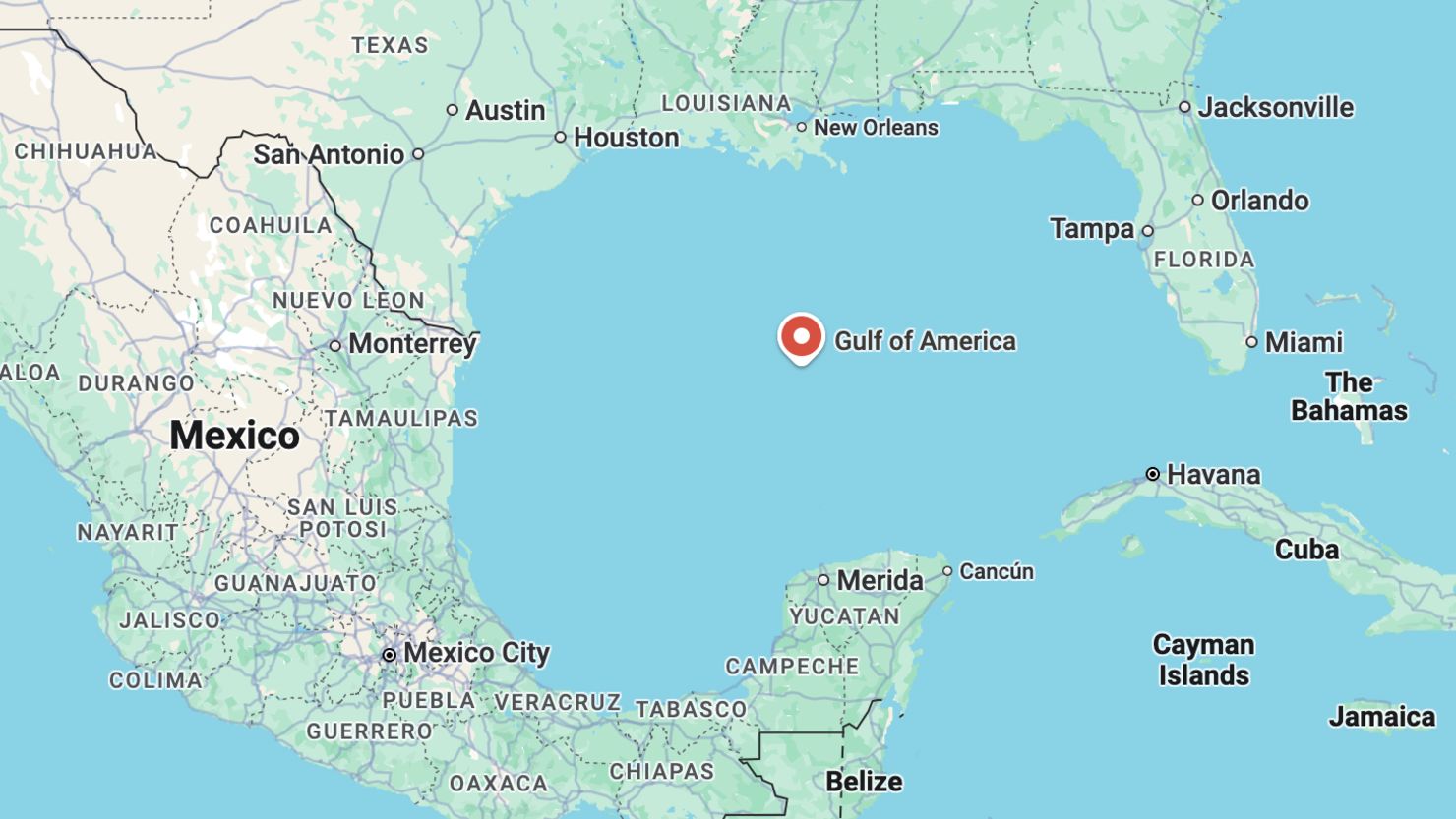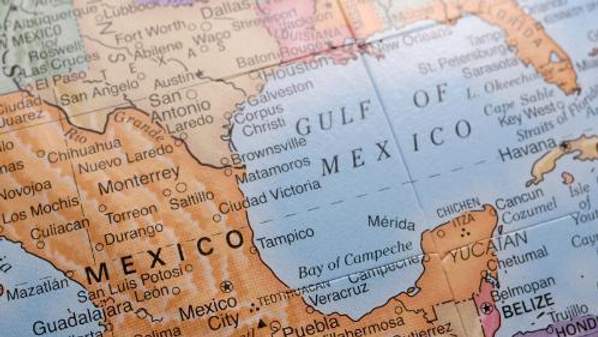Have you ever considered how much power lies in a name? The recent renaming of the Gulf of Mexico to the Gulf of America by the United States has ignited a debate about just that – the power of names to shape our understanding of the world, assert national identity, and even influence international relations. Let's delve into the heart of this debate, comparing the American renaming of the Gulf of Mexico to the situation in Europe, where the Bay of Biscay is known by different names in different countries. By exploring these two cases, we can uncover the complexities surrounding the naming of shared geographical features and the delicate balance between national sovereignty and international cooperation.

The Gulf of Mexico
The Gulf of Mexico, the ninth-largest body of water in the world, holds a captivating history. Its shores, stretching 2,700 km along the southern coast of the United States, have witnessed the ebb and flow of civilisations, from the ancient Mayans, who likely called it "nahá" (great water), to the Aztecs, who referred to it as "Chalchiuhtlicueyecatl" (House of Chalchiuhtlicue, their deity of the seas). Spanish explorers, arriving in the 16th century, sought to claim this "gem" for Europe, initially dubbing it "Golfo de Nueva España" (Gulf of New Spain). Over time, it became colloquially known as the "Spanish sea" due to its use as a maritime route to Spain.
Despite this long and layered history, in 2025, President Donald Trump issued an executive order to rename the Gulf of Mexico the "Gulf of America". This move, officially enacted by the U.S. Board on Geographic Names, aimed to "restore names that honour American greatness". The impact was immediate, with Google Maps and Apple Maps swiftly updating their platforms to reflect the change for American users.
However, this seemingly simple act of renaming has stirred a tempest in a teapot. Mexico and Cuba, who share the Gulf with the United States, have rejected the new name. Furthermore, the United Nations Convention on the Law of the Sea stipulates that a nation's authority over naming extends only to its territorial waters, which reach just 12 nautical miles from its coast. Beyond that, the waters are considered international, raising questions about the legitimacy and broader acceptance of the "Gulf of America." As some commentators have pointed out, this renaming may ultimately have limited practical implications, unlikely to be adopted by the international community or significantly alter how the Gulf is perceived globally.
Beyond the political implications, the Gulf of Mexico plays a crucial role in the ecological and economic landscape of the region. It is the origin point of the Gulf Stream, a powerful Atlantic current that influences the climate of the southeastern United States and even reaches the shores of Europe. However, the Gulf also faces environmental challenges, including a vast "dead zone" – an area of low oxygen that threatens marine life. Despite these challenges, the Gulf remains a vibrant ecosystem, teeming with diverse marine life, including over 40 species of sharks.
The renaming of the Gulf of Mexico raises fundamental questions about the relationship between a place and its name. Is it merely a label, or does it carry a deeper meaning, reflecting history, culture, and even national identity? To explore this further, let's turn our attention across the Atlantic to another gulf with a multifaceted identity – the Bay of Biscay.

The Bay of Biscay
In contrast to the politically charged renaming of the Gulf of Mexico, the Bay of Biscay, nestled on the Atlantic coast of southwestern Europe, presents a different narrative – a story of organically evolved names reflecting the region's rich cultural heritage.
In France, it is known as the Golfe de Gascogne, a name derived from the Gascons, a people with a distinct language and culture who have long inhabited southwestern France. In Spain, it is called the Golfo de Vizcaya, after the Basque province of Biscay, a historical centre of Basque culture. Adding another layer to this linguistic tapestry, the southern part of the bay, bordering the northern coast of Spain, is also known as the Cantabrian Sea.
This multiplicity of names is not a source of conflict but rather a testament to the historical interplay of cultures in this region. The Bay of Biscay has long been a crossroads of maritime activity, shaped by the seafaring traditions of the Basques, who were renowned whalers and navigators. The bay's English name, in fact, is thought to originate from the Basque districts of Biscay.
The Bay of Biscay is also known for its challenging sailing conditions, particularly during the winter months, when fierce storms and high waves have led to numerous shipwrecks throughout history. This has earned it the nickname "The Valley of Death" among sailors. Despite these dangers, the bay has been a vital maritime route, witnessing historical events like the Battle of the Bay of Biscay during World War II.
Beyond its human history, the Bay of Biscay is a unique ecological zone, a transition area between subtropical and boreal regimes, supporting a rich diversity of marine life.
The Bay of Biscay stands as a counterpoint to the Gulf of Mexico, illustrating how names can evolve organically, reflecting the cultural and historical nuances of a region. This raises the question: why do some places have multiple names while others become the subject of naming disputes? To delve deeper into this, let's explore the history and politics of naming waters.
The History and Politics of Naming Waters
The naming of bodies of water has a long and fascinating history, often intertwined with exploration, trade, and the assertion of power. Early civilisations named seas and oceans based on their location, characteristics, or mythological figures. For example, the Atlantic Ocean was named after the Titan Atlas from Greek mythology.
Over time, as maritime travel and trade expanded, the need for standardised names became apparent. International organisations like the International Hydrographic Organization (IHO) emerged to promote uniformity in nautical charts and publications. The IHO's publication "Limits of Oceans and Seas" (S-23) defines the boundaries and names of major water bodies, aiming to ensure consistency across different languages and cultures.
However, despite these efforts, naming disputes persist. One prominent example is the Sea of Japan naming dispute, where South Korea advocates for the name "East Sea". This dispute highlights the challenges of reconciling historical claims, national identities, and international standards. Historical maps and documents are often used to support different positions, making it difficult to reach a consensus.
The act of naming, particularly in the context of shared geographical features, can be seen as an exercise of power. By imposing a name, a nation or group can assert dominance, control, or a particular narrative about a place. This is evident in the Gulf of Mexico case, where the renaming can be interpreted as an attempt to emphasise American influence in the region.
The Sea of Cantabria: Echoes of the Past
Within the Bay of Biscay lies the Cantabrian Sea, a region with a unique history and identity. Its name harkens back to the ancient Cantabri, a Celtic tribe known for their fierce resistance to Roman rule. This historical connection adds another dimension to the discussion of naming conventions, highlighting the importance of recognising the deep roots of a place and its people.
The Cantabrian Sea boasts a dramatic coastline characterised by steep cliffs, sandy beaches, and numerous estuaries and inlets. This diverse geography supports a rich marine ecosystem, and the Cantabrian Sea has long been an important fishing ground, contributing to the economic development of the region.
Beyond its natural beauty, Cantabria is a treasure trove of archaeological sites, including the world-famous Altamira cave paintings, a testament to the region's ancient human history. The Cantabrian Sea's complex geomorphology, with its submarine canyons and seamounts, further adds to its unique character.

Naming Conventions and National Identity: A Delicate Balance
The contrasting cases of the Gulf of Mexico and the Bay of Biscay illuminate the intricate relationship between naming conventions and national identity. While the United States' renaming of the Gulf of Mexico can be seen as an attempt to assert national sovereignty and project an image of American exceptionalism, the diverse names for the Bay of Biscay reflect a more nuanced approach, acknowledging the historical and cultural contributions of different groups to the region's identity.
The naming of geographical features is not simply a matter of cartographic accuracy; it is a reflection of how we perceive and interact with the world around us. Names carry historical and cultural weight, shaping our understanding of place and belonging. In the case of shared geographical features, the choice of names can become a point of contention or a symbol of cooperation.
The unilateral decision to rename the Gulf of Mexico has met with resistance from neighbouring countries, highlighting the potential for conflict when national interests are prioritised over international consensus. In contrast, the different names for the Bay of Biscay demonstrate a more inclusive approach, recognising the diverse cultural heritage of the region.
It is worth noting that the practice of naming places after rivers is not limited to bodies of water. Countries like Lithuania (named after the Lietava River) and cities like Amsterdam (named after the Amstel River) demonstrate how this convention extends to broader geographical features. Even the River Styles Framework, a system for classifying and naming river types, uses a hierarchical approach that incorporates geographical and geomorphological factors.
The renaming of the Gulf of Mexico and the diverse names for the Bay of Biscay offers valuable lessons about the complexities of naming conventions, national sovereignty, and the power of names to shape our understanding of the world. While each country has the right to name geographical features within its own territory, the naming of shared international waters requires a more delicate approach, one that considers the historical context, cultural diversity, and interests of all involved parties.
The examples demonstrate that naming is not merely a technical exercise but a reflection of national identity, cultural values, and even geopolitical tensions. By understanding the historical and geographical context of these naming conventions, we can gain a deeper appreciation for the challenges of international relations and the importance of fostering cross-cultural understanding in a world where geographical features often transcend political boundaries. Ultimately, the names we use for the places we share can either divide us or bring us together.